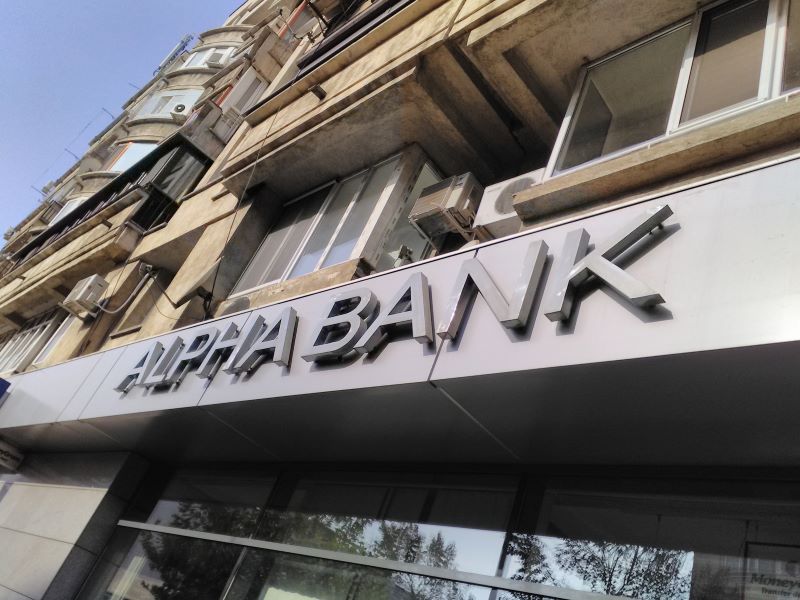RZB: Strong results and sustained growth
Dynamic growth in the balance sheet total: +15.8 percent rnProfit before tax rises 3.9 per cent to € 897 million. rnProfit after tax and minority interests down 12.8 per cent to € 393 million rnKey indicators: ROE 21.0 per cent, ROA 1.18 per cent, Cost/Income Ratio 54.9 per cent, Risk/Earnings Ratio 11.5 per cent rnMarket share in Austria increases 1 percentage point to 16.3 per cent rnVigorous growth in Central and Eastern EuropernrnThe Group of Raiffeisen Zentralbank Österreich AG (RZB) moved forward with its growth strategy in the first half of 2008. Despite difficult conditions for banks, RZB improved its market position in its domestic markets of Austria and Central and Eastern Europe (CEE), said the company in a statement. rnrnThe balance sheet total increased by 15.8 per cent, rising to 159.2 billion euros, and the half-year profit before tax rose 3.9 per cent to 878.5 million euros. During the first half of the year, RZB boosted its market share in Austria from 15.3 per cent (end-2007) to 16.3 per cent, measured in terms of the aggregate balance sheet total for the banking sector. rnrn“A key factor behind the success we have achieved at RZB is the strong business in Central and Eastern Europe, as well as excellent results with corporate customers and financial institutions served from Vienna,” noted CEO Walter Rothensteiner. rnrn“Profit from operating activities in the first half of the year was outstanding once again. Even though the turmoil on the financial markets has made conditions very difficult for quite some time now, RZB’s results underline that good strategic positioning can be a key to success,” continued Mr. Rothensteiner. rnrnStrong growth in balance sheet total rnrnRZB sustained the rapid pace of its growth, increasing its Balance sheet total by 15.8 per cent to 159.2 billion euros. In other words, as in prior years, its growth surpassed the average rate of growth of 8.1 per cent (aggregated) for all Austrian banks as reported by Oesterreichische Nationalbank (OeNB). rnrnBusiness transacted with financial institutions was the biggest contributor to this growth. Loans and advances to banks increased by 43.5 per cent to 44.4 billion euros, while Deposits from banks grew by 19.2 per cent to 58.3 billion euros. rnrnCustomer business also grew substantially. Loans and advances to customers increased by 13.4 per cent to 82.9 billion euros, while Deposits from customers grew by 11.5 per cent to 61.7 billion euros. Liabilities evidenced by paper again grew strongly, increasing by 27.6 per cent to 18.7 billion euros. rnrnRZB’s balance sheet total in Austria grew by 20.7 per cent to 70.6 billion euros between the close of 2007 and the end of the period under review. RZB’s growth was also underscored by the 10.9 per cent increase in the balance sheet total of Raiffeisen International to 80.7 billion euros. rnrnOutstanding profit from operating activities rn rnRZB’s high earning power in its operative business persists: Profit from operating activities increased by 24.9 per cent to 1,226 million euros. rnrnThe high level of RZB’s earnings from its operations continued to impress. Its Net interest income during the first half of 2008 was 32.0 per cent upon the same period of the previous year at 1,733 million euros. Provisioning for impairment losses grew by nearly the same amount, that is 32.7 per cent. This was reflected by its Net interest income after provisioning, which grew by 31.9 per cent to 1,534 million euros. The Interest margin rose by 15 basis points to 2.34 per cent. RZB’s Net commission income advanced by 20.5 per cent to 843 million euros. Despite falling by 3.6 per cent, its Trading profit remained high, at 106 million euros. rnrnGeneral administrative expenses grew by 23.0 per cent to 1,494 millions euros. Most of the increase was due to rapidly rising costs in Central Europe and the CIS region.rnrnThe effects of the financial markets crisis rnrnThe US subprime crisis caused lasting turbulence in the international financial markets. Volatility and uncertainty dominated the landscape from mid-2007. Spreads widened considerably and changes in risk perception increased risk premiums. Some categories of security were no longer tradable. Even though RZB had not invested directly in the subprime segment, these developments were mirrored in RZB’s investment portfolio. rnrnNet income from derivatives deteriorated from a loss of 0.4 million euros in the first half of 2007 to a loss of 57 million euros in the period under review. This was, above all, attributable to decreases in the mark-to-market valuations of credit derivatives (CDOs) totalling 84 million euros. rn rnNet income from financial investments turned around from a profit of 0.3 million euros in the first half of 2007 to a loss of 97 million euros in the period under review. This result included decreases of 200 million euros in the mark-to-market valuations of securities in the wake of the financial markets crisis. rnrnIn other words, RZB recognized valuation decreases on securities and credit derivatives totalling 284 million euros as a result of the financial markets crisis. However, only a fraction of this total resulted from genuine impairments. rnrnRZB has a transparent reporting policy in this regard. All the securities concerned are measured at market value, with the effect that such changes are recognized in the Income Statement. The lion’s share of the valuation decreases should have reversed by the time these financial instruments mature. rnrnSolid earnings against the background of difficult financial markets rnrnProfit before tax grew by 3.9 per cent to 879 million euros. In comparison, OeNB’s estimate of the Austrian banks’ profit from ordinary activities calculated in accordance with HGB fell by 19.2 per cent. rnrnRZB’s expected burden of Income taxes increased disproportionately in the first half of 2008, rising by 39.5 per cent to 228 million euros. As a result, its Tax ratio increased by 6.6 percentage points to 25.9 per cent. rnrnFirst-half Consolidated profit (profit less anticipated income tax expense and after minorities) was 18.2 per cent down on the previous year at 393 million euros. This was partly due to the increased tax burden, and Minority interests in profit also increased, by 27.8 per cent. That was largely a reflection of the disproportionately large increase in Raiffeisen International’s profit.rnrnGood ratios rn rnRZB’s Return on equity (ROE) before tax of 21.0 per cent was slightly down on the 22.2 per cent figure recorded for 2007 as a whole. On the other hand, the Group’s Return on assets before tax of 1.18 per cent was 0.1 percentage points better than in 2007. It recorded a Cost/income ratio of 54.9 per cent in the first half of 2008, which was 2.0 percentage points better than in 2007. rnrnA robust own funds position rnrnRZB’s Total own funds increased by 1.6 per cent to 10.5 billion euros during the first half of 2008. Issuances of subordinated bonds and increases in hidden reserves made major contributions. At 30 June 2008, RZB had a satisfactory Excess own funds ratio of 14.4 per cent. There were three main reasons for the decline versus the figure of 37.5 per cent recorded at the end of 2007: rnrnAt the end of 2007, RZB’s own funds were strengthened by capital increases at Raiffeisen Zentralbank and Raiffeisen International and a supplementary capital bond. Since these borrowings took place in anticipation of the Group’s forthcoming growth in 2008, the own funds figure at the end of 2007 was above RZB’s long-term target. rnIn line with the calculation rules that are now applicable (Basel II), RZB’s own funds requirement was higher than when applying the old calculation model (Basel I), with Basel II causing an increase in own funds requirement of about 800 million euros. rnThe basis of assessment increased by more than the Group’s equity, namely 22.2 per cent. Among other things, this was because earnings recorded during the first half and retained within the enterprise could not yet be counted towards own funds. As a result, RZB’s Own funds ratio of 9.2 per cent at the end of the first half of 2008 was below the comparable year-end figure of 11.0 per cent. 0.5 percentage points of the decrease was attributable to Basel II.rn rnRZB’s Core capital ratio fell accordingly versus the end of 2007, retreating by 1.5 percentage points to 7.3 per cent. Nonetheless, RZB’s overall capital position is robust. Given profit retention at year-end, it will suffice to finance the Group’s medium-term plans. rnrnStaff levels reflect the Group’s expansion rnrnRZB’s highly qualified employees are among its most valuable assets. The extension of the branch network in the CEE region led to renewed growth in the number of staff, increasing the workforce by 5.9 per cent to 64,954 (on a full-time equivalent basis) in the six months ended 30 June 2008. rnrnThe workforce grew by 5.9 per cent to 61,538 in the CEE region and by 6.2 per cent to 3,036 in Austria. The average number of RZB staff (full-time equivalents) was 11.7 per cent up on the first half of 2007 at 63,275. rnrnA leading bank in Central and Eastern Europe rnrnRZB is one of the leading banks in the CEE region. At the end of the first half, it had a presence in 17 markets in the region via banking and leasing subsidiaries and numerous specialist companies. Business in the CEE region is conducted mainly via the Network banks, which operate under the umbrella of the listed Raiffeisen International subgroup. On the reporting date, Raiffeisen Zentralbank held a stake of approximately 69 per cent in Raiffeisen International. rnrnRaiffeisen International continued to grow strongly during the first half of 2008, when its balance sheet total increased by 8 billion euros or 10.9 per cent to 80.7 billion euros. At the same time, it posted another record result. Its first-half Profit before tax came to 842.7 million euros, which was 38.9 per cent up on the same period of 2007. rnrn(RZB’s results in its Central Europe, Southeastern Europe and CIS geographical reporting segments do not exactly mirror Raiffeisen International’s profit because, above all, of Raiffeisen Zentralbank’s funding and management costs and the business conducted by other Group-members in the CEE region.) rnrn*** rnThe Consolidated Financial Statements of RZB are prepared in conformity with the International Financial Reporting Standards (IFRS). A comprehensive description of the business segments as well as detailed information about the balance-sheet and the P&L statement can be found in the Interim Report 2008. You can access it online: http://www.rzb.at/interimreport-2008. The original German version is available at http://www.rzb.at/zwischenbericht-2008. You will find the semi-annual results of Raiffeisen International at http://www.ri.co.at under Company Info, section “Business Development”. rn
Comentarii
Nu există comentarii pentru această știre.
Adauga un comentariu
Alte stiri din categoria: ENGLISH
Neutral interest rate in Romania
The neutral nominal rate in Romania has been falling since the start of inflation targeting in 2005. The Taylor Rule clearly shows that interest rates peaked in 2022 and have been on a clear downward path ever since.Furthermore, the model estimates a long-term neutral nominal rate of around 3.9%, which is the equivalent of approx. 1.4% real.Using a more sophisticated model (i.e. New York FED’S HLW model), the real neutral interest rate in Romania is estimated currently at around 1.5% (1.7% 2023 average) and the historical mean at 1.2%.This implies a neutral nominal rate between 4.00% and 4.50%. In the past decade, the NBR real effective rate was below the neutral rate and only over the past year climbed above the neutral mark.Source: Erste Bank
Merger of Alpha Bank and UniCredit Bank Romania
Press Release:"Alpha Services and Holdings announces a strategic partnership with UniCredit in RomaniaMerger of Alpha Bank Romania and UniCredit Bank Romania and creation of third largest bank in Romania by... detalii
National Bank of Romania (NBR) Board decisions on monetary policy
NBR Board decisions on monetary policyIn its meeting of 4 April 2023, the Board of the National Bank of Romania decided:• to keep the monetary policy rate at 7.00 percent per annum;• to leave unchanged the lending (Lombard) facility rate at 8.00 percent per annum and the deposit facility rate at 6.00 percent per annum;• to keep the existing levels of minimum reserve requirement ratios on both leu- and foreign currency-denominated liabilities of credit institutions.The annual inflation rate went down to 15.52 percent in February 2023, from 16.37 percent in December 2022, relatively in line with forecasts. The decrease was mainly driven by the sizeable drop in the dynamics of fuel and electricity prices, under the impact of significant base effects and the change made to the energy price capping and compensation scheme starting 1... detalii
ING posts 2022 net result of €3,674 million, dividend of €0.389 per share
ING press release:ING posts FY2022 net result of €3,674 million,proposed final 2022 dividend of €0.389 per share 4Q2022 profit before tax of €1,711 million; CET1 ratio remains strong at 14.5%•Profit before tax up 29% on 4Q2021 and 24% on 3Q2022, mainly driven by higher income•Higher net interest income, as a further increase in liability margins helped offset TLTRO impact this quarter•Risk costs declined to 17 bps of average customer lending Full-year 2022 net result of €3,674 million, supported by growing customer base and increase in lending and deposits•On a full-year basis, our primary customer base grew by 585,000•Net core lending growth of €18 billion and net core deposits growth of €25 billion in 2022•Net result of €3,674 million in a challenging year; proposed final 2022 dividend of €0.389 per share CEO statement“Looking back, 2022 was... detalii
 BT Financial Results as at 30 September 2022
BT Financial Results as at 30 September 2022
 No progress for the time being in Revolut becoming a subsidiary bank
No progress for the time being in Revolut becoming a subsidiary bank
 Risks may arise with some cross-border electronic invoice and card services
Risks may arise with some cross-border electronic invoice and card services
 ING posts 2Q 2022 net result of €1,178 million, supported by increased income and modest risk costs
ING posts 2Q 2022 net result of €1,178 million, supported by increased income and modest risk costs
 Sale of Raiffeisenbank (Bulgaria) EAD to KBC Bank closed
Sale of Raiffeisenbank (Bulgaria) EAD to KBC Bank closed
 Willi Cernko appointed new CEO of Erste Group
Willi Cernko appointed new CEO of Erste Group
 Erste Group CEO Bernd Spalt decides not to renew contract
Erste Group CEO Bernd Spalt decides not to renew contract
 First Bank launches the new cards collection
First Bank launches the new cards collection
 NBR Board decisions on monetary policy
NBR Board decisions on monetary policy
 Reflections on 20 years of the euro: joint article by Eurogroup members
Vezi toate stirile
Reflections on 20 years of the euro: joint article by Eurogroup members
Vezi toate stirile
Criza COVID-19
- In majoritatea unitatilor BRD se poate intra fara certificat verde
- La BCR se poate intra fara certificat verde
- Firmele, obligate sa dea zile libere parintilor care stau cu copiii in timpul pandemiei de coronavirus
- CEC Bank: accesul in banca se face fara certificat verde
- Cum se amana ratele la creditele Garanti BBVA
Topuri Banci
- Topul bancilor dupa active si cota de piata in perioada 2022-2015
- Topul bancilor cu cele mai mici dobanzi la creditele de nevoi personale
- Topul bancilor la active in 2019
- Topul celor mai mari banci din Romania dupa valoarea activelor in 2018
- Topul bancilor dupa active in 2017
Asociatia Romana a Bancilor (ARB)
- Băncile din România nu au majorat comisioanele aferente operațiunilor în numerar
- Concurs de educatie financiara pentru elevi, cu premii in bani
- Creditele acordate de banci au crescut cu 14% in 2022
- Romanii stiu educatie financiara de nota 7
- Gradul de incluziune financiara in Romania a ajuns la aproape 70%
ROBOR
- ROBOR: ce este, cum se calculeaza, ce il influenteaza, explicat de Asociatia Pietelor Financiare
- ROBOR a scazut la 1,59%, dupa ce BNR a redus dobanda la 1,25%
- Dobanzile variabile la creditele noi in lei nu scad, pentru ca IRCC ramane aproape neschimbat, la 2,4%, desi ROBOR s-a micsorat cu un punct, la 2,2%
- IRCC, indicele de dobanda pentru creditele in lei ale persoanelor fizice, a scazut la 1,75%, dar nu va avea efecte imediate pe piata creditarii
- Istoricul ROBOR la 3 luni, in perioada 01.08.1995 - 31.12.2019
Taxa bancara
- Normele metodologice pentru aplicarea taxei bancare, publicate de Ministerul Finantelor
- Noul ROBOR se va aplica automat la creditele noi si prin refinantare la cele in derulare
- Taxa bancara ar putea fi redusa de la 1,2% la 0,4% la bancile mari si 0,2% la cele mici, insa bancherii avertizeaza ca indiferent de nivelul acesteia, intermedierea financiara va scadea iar dobanzile vor creste
- Raiffeisen anunta ca activitatea bancii a incetinit substantial din cauza taxei bancare; strategia va fi reevaluata, nu vor mai fi acordate credite cu dobanzi mici
- Tariceanu anunta un acord de principiu privind taxa bancara: ROBOR-ul ar putea fi inlocuit cu marja de dobanda a bancilor
Statistici BNR
- Deficitul contului curent, creștere cu 16% în ianuarie 2025
- Deficitul contului curent, aproape 30 miliarde euro în 2024
- Deficitul contului curent, aproape 20 miliarde euro după primele nouă luni
- Deficitul contului curent, aproape 18 miliarde euro după primele opt luni
- Deficitul contului curent, peste 9 miliarde euro pe primele cinci luni
Legislatie
- Decizia nr.105/2007 privind raportarea la Biroul de Credit
- Legea nr. 311/2015 privind schemele de garantare a depozitelor şi Fondul de garantare a depozitelor bancare
- Rambursarea anticipata a unui credit, conform OUG 50/2010
- OUG nr.21 din 1992 privind protectia consumatorului, actualizata
- Legea nr. 190 din 1999 privind creditul ipotecar pentru investiții imobiliare
Lege plafonare dobanzi credite
- Care este dobanda maxima la un credit IFN?
- BNR propune Parlamentului plafonarea dobanzilor la creditele bancilor intre 1,5 si 4 ori peste DAE medie, in functie de tipul creditului; in cazul IFN-urilor, plafonarea dobanzilor nu se justifica
- Legile privind plafonarea dobanzilor la credite si a datoriilor preluate de firmele de recuperare se discuta in Parlament (actualizat)
- Legea privind plafonarea dobanzilor la credite nu a fost inclusa pe ordinea de zi a comisiilor din Camera Deputatilor
- Senatorul Zamfir, despre plafonarea dobanzilor la credite: numai bou-i consecvent!
Anunturi banci
- BCR este inchisa vineri, 18 aprilie, si luni, 21 aprilie
- Cererile de transfer de bani prin Whatsapp, Telegram, Messenger sunt fraude
- Un telefon sau mesaj care pare de la banca poate fi frauda
- Cererea unui ajutor in bani poate fi o inselaciune
- Cate reclamatii primeste Intesa Sanpaolo Bank si cum le gestioneaza
Analize economice
- Inflația anuală, redusă la 4,86%
- Comerțul, a cincea lună consecutivă de ajustare a creșterii
- Pensia reală a crescut cu peste 15% anul trecut
- Deficitul bugetar, rezultat slab după primele două luni
- Deficit comercial în creștere cu 38,5% pe ianuarie 2025
Ministerul Finantelor
- Deficitul bugetar, din ce în ce mai mare la început de an
- -8,65% din PIB, deficit bugetar pe anul 2024
- Datoria publică, 51,4% din PIB la mijlocul anului
- Deficit bugetar de 3,6% din PIB după prima jumătate a anului
- Deficit bugetar de 3,4% din PIB după primele cinci luni ale anului
Biroul de Credit
- FUNDAMENTAREA LEGALITATII PRELUCRARII DATELOR PERSONALE IN SISTEMUL BIROULUI DE CREDIT
- BCR: prelucrarea datelor personale la Biroul de Credit
- Care banci si IFN-uri raporteaza clientii la Biroul de Credit
- Ce trebuie sa stim despre Biroul de Credit
- Care este procedura BCR de raportare a clientilor la Biroul de Credit
Procese
- ANPC pierde un proces cu Intesa si ARB privind modul de calcul al ratelor la credite
- Un client Credius obtine in justitie anularea creditului, din cauza dobanzii prea mari
- Hotararea judecatoriei prin care Aedificium, fosta Raiffeisen Banca pentru Locuinte, si statul sunt obligati sa achite unui client prima de stat
- Decizia Curtii de Apel Bucuresti in procesul dintre Raiffeisen Banca pentru Locuinte si Curtea de Conturi
- Vodafone, obligata de judecatori sa despagubeasca un abonat caruia a refuzat sa-i repare un telefon stricat sau sa-i dea banii inapoi (decizia instantei)
Stiri economice
- Deficitul comercial pe primele două luni ale anului, majorat cu 35%
- România, campioana europeană la șomajul tinerilor
- România, pe locul trei în UE la creșterea costului salarial în T4 2024
- Producția industrială, scădere conjuncturală în ianuarie 2025
- Datoria publică, 54,6% din PIB la finele lui 2024
Statistici
- România, marginal peste Estonia la inflația anuală
- România, a doua țară din UE ca pondere a salariaților cu venituri mici
- România, pe locul trei în UE la creșterea costului muncii în T2 2024
- Cheltuielile cu pensiile - România, pe locul 19 în UE ca pondere în PIB
- Dobanda din Cehia a crescut cu 7 puncte intr-un singur an
FNGCIMM
- Programul IMM Invest continua si in 2021
- Garantiile de stat pentru credite acordate de FNGCIMM au crescut cu 185% in 2020
- Programul IMM invest se prelungeste pana in 30 iunie 2021
- Firmele pot obtine credite bancare garantate si subventionate de stat, pe baza facturilor (factoring), prin programul IMM Factor
- Programul IMM Leasing va fi operational in perioada urmatoare, anunta FNGCIMM
Calculator de credite
- ROBOR la 3 luni a scazut cu aproape un punct, dupa masurile luate de BNR; cu cat se reduce rata la credite?
- In ce mall din sectorul 4 pot face o simulare pentru o refinantare?
Noutati BCE
- Dobanda la euro scade la 2,25%
- Acord intre BCE si BNR pentru supravegherea bancilor
- Banca Centrala Europeana (BCE) explica de ce a majorat dobanda la 2%
- BCE creste dobanda la 2%, dupa ce inflatia a ajuns la 10%
- Dobânda pe termen lung a continuat să scadă in septembrie 2022. Ecartul față de Polonia și Cehia, redus semnificativ
Noutati EBA
- Bancile romanesti detin cele mai multe titluri de stat din Europa
- Guidelines on legislative and non-legislative moratoria on loan repayments applied in the light of the COVID-19 crisis
- The EBA reactivates its Guidelines on legislative and non-legislative moratoria
- EBA publishes 2018 EU-wide stress test results
- EBA launches 2018 EU-wide transparency exercise
Noutati FGDB
- Banii din banci sunt garantati, anunta FGDB
- Depozitele bancare garantate de FGDB au crescut cu 13 miliarde lei
- Depozitele bancare garantate de FGDB reprezinta doua treimi din totalul depozitelor din bancile romanesti
- Peste 80% din depozitele bancare sunt garantate
- Depozitele bancare nu intra in campania electorala
CSALB
- Sistemul bancar romanesc este deosebit de bine pregatit pentru orice fel de socuri
- La CSALB poti castiga un litigiu cu banca pe care l-ai pierde in instanta
- Negocierile dintre banci si clienti la CSALB, in crestere cu 30%
- Sondaj: dobanda fixa la credite, considerata mai buna decat cea variabila, desi este mai mare
- CSALB: Romanii cu credite caută soluții pentru reducerea ratelor. Cum raspund bancile
First Bank
- Ce trebuie sa faca cei care au asigurare la credit emisa de Euroins
- First Bank este reprezentanta Eurobank in Romania: ce se intampla cu creditele Bancpost?
- Clientii First Bank pot face plati prin Google Pay
- First Bank anunta rezultatele financiare din prima jumatate a anului 2021
- First Bank are o noua aplicatie de mobile banking
Noutati FMI
- FMI: criza COVID-19 se transforma in criza economica si financiara in 2020, suntem pregatiti cu 1 trilion (o mie de miliarde) de dolari, pentru a ajuta tarile in dificultate; prioritatea sunt ajutoarele financiare pentru familiile si firmele vulnerabile
- FMI cere BNR sa intareasca politica monetara iar Guvernului sa modifice legea pensiilor
- FMI: majorarea salariilor din sectorul public si legea pensiilor ar trebui reevaluate
- IMF statement of the 2018 Article IV Mission to Romania
- Jaewoo Lee, new IMF mission chief for Romania and Bulgaria
Noutati BERD
- Creditele neperformante (npl) - statistici BERD
- BERD este ingrijorata de investigatia autoritatilor din Republica Moldova la Victoria Bank, subsidiara Bancii Transilvania
- BERD dezvaluie cat a platit pe actiunile Piraeus Bank
- ING Bank si BERD finanteaza parcul logistic CTPark Bucharest
- EBRD hails Moldova banking breakthrough
Noutati Federal Reserve
- Federal Reserve anunta noi masuri extinse pentru combaterea crizei COVID-19, care produce pagube "imense" in Statele Unite si in lume
- Federal Reserve urca dobanda la 2,25%
- Federal Reserve decided to maintain the target range for the federal funds rate at 1-1/2 to 1-3/4 percent
- Federal Reserve majoreaza dobanda de referinta pentru dolar la 1,5% - 1,75%
- Federal Reserve issues FOMC statement
Noutati BEI
- BEI a redus cu 31% sprijinul acordat Romaniei in 2018
- Romania implements SME Initiative: EUR 580 m for Romanian businesses
- European Investment Bank (EIB) is lending EUR 20 million to Agricover Credit IFN
Mobile banking
- Comisioanele BRD pentru MyBRD Mobile, MyBRD Net, My BRD SMS
- Termeni si conditii contractuale ale serviciului You BRD
- Recomandari de securitate ale BRD pentru utilizatorii de internet/mobile banking
- CEC Bank - Ghid utilizare token sub forma de card bancar
- Cinci banci permit platile cu telefonul mobil prin Google Pay
Noutati Comisia Europeana
- Avertismentul Comitetului European pentru risc sistemic (CERS) privind vulnerabilitățile din sistemul financiar al Uniunii
- Cele mai mici preturi din Europa sunt in Romania
- State aid: Commission refers Romania to Court for failure to recover illegal aid worth up to €92 million
- Comisia Europeana publica raportul privind progresele inregistrate de Romania in cadrul mecanismului de cooperare si de verificare (MCV)
- Infringements: Commission refers Greece, Ireland and Romania to the Court of Justice for not implementing anti-money laundering rules
Noutati BVB
- BET AeRO, primul indice pentru piata AeRO, la BVB
- Laptaria cu Caimac s-a listat pe piata AeRO a BVB
- Banca Transilvania plateste un dividend brut pe actiune de 0,17 lei din profitul pe 2018
- Obligatiunile Bancii Transilvania se tranzactioneaza la Bursa de Valori Bucuresti
- Obligatiunile Good Pople SA (FRU21) au debutat pe piata AeRO
Institutul National de Statistica
- România, la 78% din PIB-ul mediu pe locuitor al UE
- Producția industrială, la cota -1,8% după 11 luni din 2024
- Deficitul contului curent, peste 26 miliarde euro în noiembrie 2024
- Comerțul cu amănuntul - în creștere cu 8% pe primele 10 luni
- Deficitul balanței comerciale la 9 luni, cu 15% mai mare față de aceeași perioadă a anului trecut
Informatii utile asigurari
- Data de la care FGA face plati pentru asigurarile RCA Euroins: 17 mai 2023
- Asigurarea împotriva dezastrelor, valabilă și in caz de faliment
- Asiguratii nu au nevoie de documente de confirmare a cutremurului
- Cum functioneaza o asigurare de viata Metropolitan pentru un credit la Banca Transilvania?
- Care sunt documente necesare pentru dosarul de dauna la Cardif?
ING Bank
- La ING se vor putea face plati instant din decembrie 2022
- Cum evitam tentativele de frauda online?
- Clientii ING Bank trebuie sa-si actualizeze aplicatia Home Bank pana in 20 martie
- Obligatiunile Rockcastle, cel mai mare proprietar de centre comerciale din Europa Centrala si de Est, intermediata de ING Bank
- ING Bank transforma departamentul de responsabilitate sociala intr-unul de sustenabilitate








